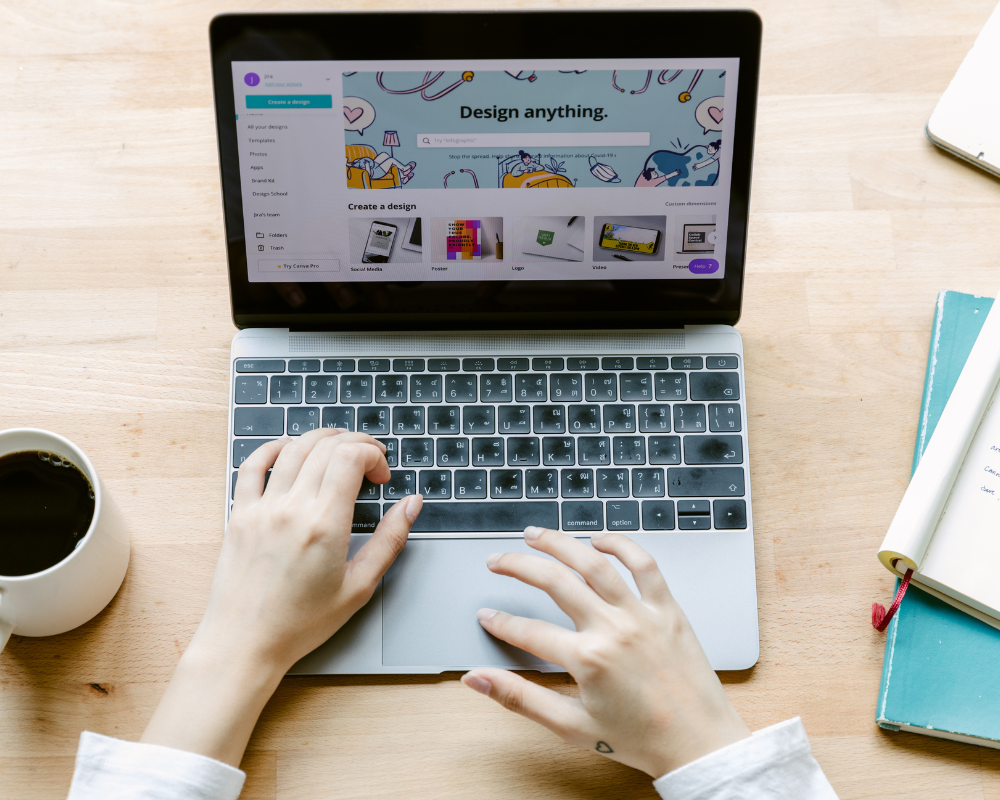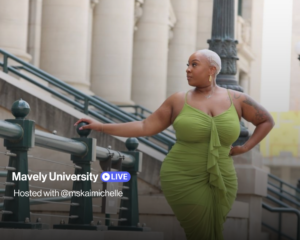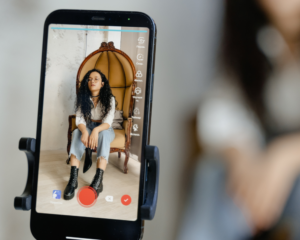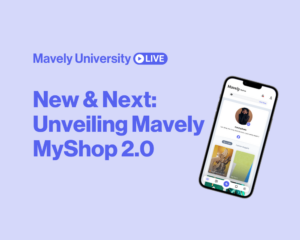What is an influencer media kit, and is it required for all influencers? When you’re getting started as an influencer, landing brand partnerships can be difficult, especially if you have a smaller audience.
No matter the size of your audience, media kits for influencers are highly beneficial. They help you land brand collaborations and monetize your social media account.
This guide will break down what an influencer media kit is, why you need one, and what should be included. Next, we’ll cover the four tiers of influencers and dive into the opportunities that exist for influencers with smaller follower counts.
Finally, keep reading for the key strategy that will keep your audience engaged with your content and make your promotional posts more successful.
For nano-influencers and micro-influencers, Mavely is a great platform to begin your career because it matches you with thousands of brands no matter your follower size.
What is an Influencer Media Kit?
Ready to monetize your social media with brand partnerships? If the answer is yes, you need an influencer media kit. An influencer media kit is like a combination of a resume and a portfolio for influencers. You’ll use your media kit to pitch yourself to brands for marketing campaigns.
A media kit for influencers typically includes a brief personal bio and profile stats that brands use to decide whether to partner with you on a campaign. For example, it should include your follower count, engagement rate, audience demographics, and the type of content you create. Your media kit may also include examples of past campaigns (if you have them).
Essentially, your influencer media kit needs to showcase who you are so that brands can determine if you’re the right match for their marketing campaigns. Media kits for influencers should sell you and what you offer so that brands will be eager to work with you.
Here are a few things to keep in mind while you build your influencer media kit that can help you succeed at brand campaigns.
What’s in Your Influencer Media Kit?
The first thing brands review is your bio, which should showcase your personality and what makes you unique. It is best to keep that copy short, no longer than one paragraph.
Next, brands need to see your influencer marketing statistics. It is very important to be transparent with this data. One of the most important things brands want to know is whether or not your audience aligns with their target market. If possible, include details about the age, location, gender, and interests of your audience.
Your influencer marketing kit should also show off your work so that brands know you can create high-quality content. If you do not have previous marketing campaigns to include in your influencer media kit, provide other social media posts. Choose posts with high engagement rates and display your unique voice as an influencer.
The next thing to include in your media kit for influencers is a list of the types of collaborations you’re interested in. For example, will you participate in sponsored posts, reviews, giveaways, partnerships, or all of the above? Adding in these specific details will help brands quickly decide if they want to work with you.
If you have testimonials from past partnerships, you can include those in your media kit too. However, remember that your media kit should be brief and easily scannable, so don’t bog it down with too many testimonials.
Lastly, you should include your contact information and details about your rates. Your contact information should be easy to access and include your email address, phone number, and links to your social media accounts.
When negotiating rates, it’s up to you whether you want to include rates in your media kit or a line that says, “Rates available upon request.” Either way, brands appreciate it when you are upfront.
What is the Best Format For a Media Kit?
You can package your influencer media kit in a variety of ways. It can be a document, a website, or a slideshow presentation. The important thing is that it looks professional. It should be visually compelling and brief so that it catches the eye of brands, is easy to digest, and isn’t packed with too much information.
To add visual appeal, supplement the content of your media kit with professionally shot photos. Using photos from previous campaigns is ideal, but if you’re just getting started and haven’t worked with brands before, feel free to use posts from your social media profiles.
How Many Pages Should a Media Kit Be?
The length of your influencer media kit depends on your experience. For micro-influencers with small follower counts, a one-page influencer media kit is sufficient. That length should give you more than enough space to showcase who you are, include stats about your audience, and provide your contact information.
If you have a larger audience, your influencer media kit can be between one and four pages. To add the most value with a larger media kit, you can expand on your stats, include examples of previous marketing campaigns, and add testimonials from past clients.
The key is to create a media kit that brands can quickly skim through to decide if they want to work with you. Keeping it brief but focused with valuable information is the perfect recipe for a successful influencer media kit.
How Many Followers Do You Need to Be Considered an Influencer?
Curious about how many followers you need to be considered an influencer? Influencer marketing has changed over recent years, and you no longer need thousands of followers to score lucrative brand partnerships.
There are four tiers of influencers, including:
- Nano-influencers: these creators have small but engaged audiences with between 1,000 and 10,000 followers.
- Micro-influencers: these creators have niche audiences and strong engagement rates between 10,000 and 50,000 followers.
- Macro-influencers: these creators have a large reach between 50,000 and one million followers.
- Mega-influencers: these creators are often celebrities with more than a million followers.
Brands love working with nano-influencers and micro-influencers because they have strong engagement rates based on their relationships with their audience and are more likely to create content around a niche subject that matches their products.
To find brands to work with as a nano-influencer or micro-influencer, consider using an online influencer marketing platform like Mavely. There is no minimum follower count required to join Mavely, and the platform makes it easier than ever to connect with brands. It also makes it simple for your followers to shop the products you promote with personalized trackable links.
What is the 80/20 Rule For Influencers?
Whether you’re a seasoned influencer or just getting started, you should know about the 80/20 rule. This rule states that 80% of your content should be organic, non-sponsored content that provides value and engages your audience. The other 20% can be reserved for promotional posts.
Following the 80/20 rule ensures that your social media presence does not become all about promoting products, which will eventually exhaust your audience. When you focus more on connecting with your audience and building a community around your content, you will improve the performance of your sponsored posts.
Join Mavely and Start Working With Brands Today
Want an easier way to connect with popular brands? Join Mavely, a one-of-a-kind influencer marketing platform that facilitates collaborations between influencers and brands. Mavely can connect you to thousands of brands and simplify the entire process so that you can focus on creating content.
With no fees to get started and no minimum follower count required to join Mavely, it’s the ideal platform for nano-influencers and micro-influencers. Get started today.




